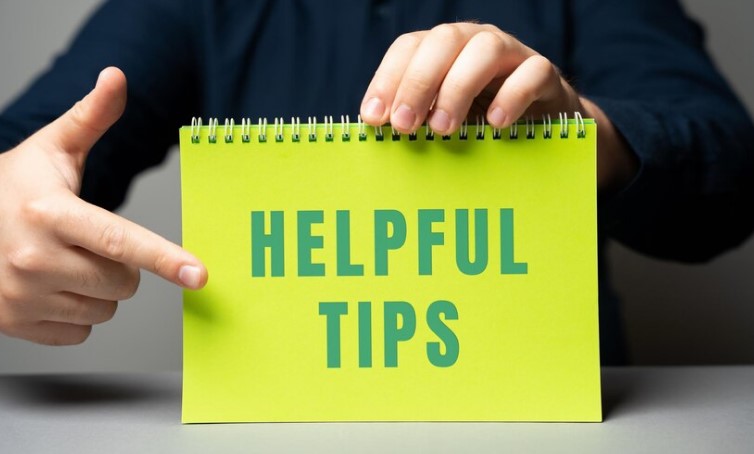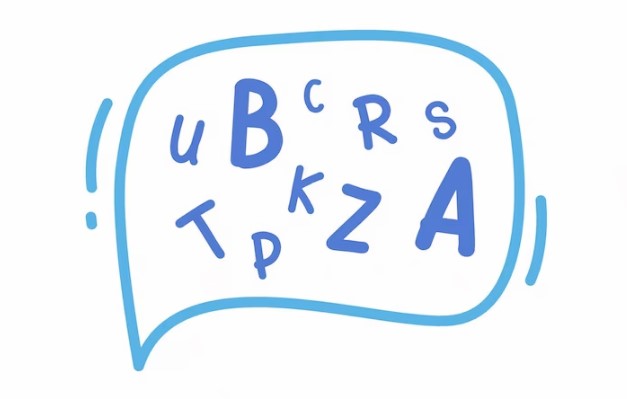یادگیری مکالمه انگلیسی برای بسیاری از زبان آموزان سخت و دشوار است. حتی برای بعضی زبان آموزان، صحبت کردن روان زبان انگلیسی آرزو شده است. یادگیری هیچ مهارتی ساده و سریع نیست. باید زمان و پشتکار زیادی صرف یادگیری هر مهارتی شود. مانند کودکی که می خواهد زبان مادری را یاد بگیرد. او یک تا دو سال اول فقط می شنود و بعد کم کم شروع به صحبت می کند.
بسیاری از زبان آموزان گوش دادن و تقویت مهارت شنیداری را فراموش می کنند. نمی دانند که مهارت شنیداری چقدر در تقویت مهارت مکالمه شان تاثیر دارد. به این مکالمه توجه کنید:
پیشنهادهای ویژه

نرم افزار آموزش مکالمه انگلیسی با امکانات پیشرفته (اندروید)
با قابلیت تشخیص صدای کاربر، هایلایت مکالمه ها، تمرین و قابلیتهای فراوان دیگر

پکیج کامل آموزش مکالمه انگلیسی (14 دی وی دی)
بسته کامل از بهترین مجموعههای آموزش مکالمه
💬 ?How’s It Going (حالت چطوره؟)

Mike: Hey, Vicky!
مایک: هی، ویکی!
Vicky: Hi, Mike! How’s it going?
ویکی: سلام، مایک! اوضاع و احوال چطوره؟
Mike: Great! How about you? How are you doing?
مایک: عالی! شما چطور؟ حال شما چطور است؟
Vicky: Not so good.
ویکی: خیلی خوب نیست.
Mike: Oh no! What’s wrong?
مایک: اوه نه! مشکل چیه؟
Vicky: Oh, classes start tomorrow.
ویکی: اوه، کلاس ها از فردا شروع می شود.
Mike: Ha ha. Yeah, I know what you mean.
مایک: ها ها… آره میدونم منظورت چیه.
- بیشتر بخوانید : آموزش مکالمه زبان انگلیسی (هر آنچه لازم است بدانید!)
📚 لغات پرکاربرد انگلیسی مکالمه

🔸How’s it going? (phrase) : a question to ask about someone’s health or situation.
Example: How’s it going these days? – Well, actually I’ve been pretty busy.
How’s it going? – Great! How about you?
حالت چطوره؟ (عبارت) : سوالی برای پرسیدن در مورد سلامتی یا وضعیت کسی.
مثال: این روزها چیکار می کنی؟ – خب، در واقع من خیلی سرم شلوغه.
اوضاع چطوره؟ – عالی! شما چطور؟
🔸How are you doing? (phrase) : a question to find out about someone’s health or situation.
Example: How are you doing? – Not bad.
حال شما چطور است؟ (عبارت) : سوالی برای پرسیدن وضعیت یا سلامتی یک نفر.
مثال: حال شما چطور است؟ – بد نیست.
🔸great (adjective) : very good
Example: That shirt looks great on you!
How’s it going? – Great! How about you?
عالی (صفت) : بسیار خوب.
مثال: آن پیراهن خیلی به شما می آد!
اوضاع چطوره؟ – عالی! شما چطور؟
🔸not so good (phrase) : an expression meaning that one’s health or situation is bad.
Example: How are you doing? – Not so good. I have a cold.
نه چندان خوب (عبارت) : یک عبارت به معنای اینکه سلامتی یا وضعیت کسی بد است (مناسب نیست).
مثال: حالت چطور است؟ – خیلی خوب نیستم. سرما خورده ام.
🔸summer vacation (phrase) : a break from school or work during the summer months.
Example: I want to go camping during summer vacation. My friend is doing pretty good these days; he’s looking healthy.
تعطیلات تابستانی (عبارت) : استراحت (بعد) از مدرسه یا کار در ماه های تابستان.
مثال: من می خواهم در تعطیلات تابستانی به کمپینگ بروم. دوست من این روزها حالش خیلی خوب است. او سالم به نظر می رسد.
🔸pretty good (phrase) : phrase to show that you are fairly healthy and your situation is good.
Example: How are you doing? – Pretty good!
نسبتا خوب (عبارت) : عبارتی برای نشان دادن اینکه نسبتاً سالم هستید و وضعیت شما خوب است.
مثال: حال شما چطور است؟ – تقریبا خوب!
🔸not bad (phrase) : a phrase to show you are fairly healthy and your situation is good.
Example: How are you doing? – Not bad.
بد نیستم (عبارت) : عبارتی که نشان می دهد شما نسبتاً سالم هستید و وضعیت شما خوب است
مثال: حال شما چطور است؟ – بد نیست.
🔸all right (adjective) : okay; to one’s liking; acceptable.
Example: Is everything all right?
بسیار خوب (صفت) : خوب، باب میل بودن، قابل قبول.
مثال: همه چیز رو به راه است؟
📑 Vocabulary Phrase Usage (استفاده از عبارت واژگانی)
Let’s look at the questions, “How’s it going?” and “How are you doing?” Both of these phrases mean the same thing and are similar to “How are you?” The difference is simply that they are more casual expressions.
The next phrase is “not bad.” This could mean that things are just okay, but with a positive intonation, it can actually mean “good.” The intonation is very important with phrases such as, “not bad.”
بیایید به سؤالات نگاه کنیم، “اوضاع و احوالت چطوره؟” و “حالت چطوره؟” هر دوی این عبارات به معنای یک چیز است و شبیه به “چطوری؟” است. تفاوت ساده ای که می توان گفت، این است که آنها اصطلاحات ساده تری هستند.
عبارت بعدی «بد نیست» است. این می تواند به این معنی باشد که همه چیز درست است، اما با یک لحن مثبت، در واقع می تواند به معنای “خوب” باشد. لحن و آهنگ کلام در عبارتی مانند “بد نیست” بسیار مهم است.
✏️ Grammar Points (نکات گرامری)

The Focus of This Lesson is Asking About the Health or General Situation of Someone.
🔹 “How are you doing? / How’s it going?”
تمرکز این درس پرسش در مورد سلامت یا وضعیت عمومی کسی است.
“حالت چطوره؟ / اوضاع و احوال چطوره؟”
We often ask people we know about their health or situation the first time we see them on a given day.
You may be more familiar with the formal conversation that goes like this:
ما اغلب افرادی که می شناسیم از آنها در مورد سلامتی یا وضعیتشان، اولین باری که آنها را در یک روز خاص می بینیم، می پرسیم. ممکن است با مکالمه رسمی که به شرح زیر است، بیشتر آشنا باشید:
A: “How are you?”
B: “Fine, thanks. And you?”
A: “Fine, thanks.”
Although the above conversation is useful in formal situations, most of our interactions are in less formal situations. We are more likely to hear questions such as “How are you doing?” and “How’s it going?” between friends. We are also likely to hear answers other than “fine.”
A: “حالت چطوره؟”
B: “خوب، ممنون. و تو؟”
A: “خوب، ممنون.”
اگرچه مکالمه فوق در موقعیت های رسمی کاربرد دارد، اما بیشتر تعاملات ما در موقعیت های نه چندان رسمی است. ما بیشتر سوالاتی مانند: “حالت چطور است؟” و “اوضاع و احوال چطور است؟» را بین دوستان میشنویم. ما همچنین پاسخ هایی غیر از “خوبم” خواهیم شنید.
Here are some examples of other answers we might hear:
“pretty good”
“not bad”
“all right
“okay”
“not so good”
در اینجا چند نمونه از پاسخ های دیگری که ممکن است بشنویم آورده شده است:
“تقریبا خوبم”
“بد نیستم”
“خیلی خوبم”
“خوبم”
“خیلی خوب نیستم”
Be sure to try some of these words in your own conversations.
حتما برخی از این کلمات را در مکالمات خود امتحان کنید.
Sample Sentences
“How’s it going, Jessi?”
“Pretty good. How about you?”
“Not bad.”
“How are you doing, Daniel?”
“Great. How about you?”
“Not so good.”
جملات نمونه
“چطوری، جسی؟”
“تقریبا خوبم. شما چطور؟”
“بد نیستم.”
“حالت چطوره دنیل؟”
“عالی. شما چطور؟”
“خیلی خوب نیستم.”
🗣️ Pronunciation Tip (نکات تلفظ)

In casual speech, we often push sounds together. Listen to how we push the sounds together in these questions:
در گفتار خودمانی و غیر رسمی، ما اغلب صدا ها را به هم وصل می کنیم. به نحوه وصل کردن (ترکیب) صداها در این سوالات گوش دهید:
“How’s it going?”
“How is it” sounds like “howzit” when spoken casually.
“اوضاع چطوره؟”
“How is it” وقتی به طور خودمانی صحبت می شود، مانند “howzit” به نظر می رسد.
“How are you doing?”
“How are you doing?” sounds more like “Howya doin?”
“حالت چطوره؟”
“How are you doing” بیشتر شبیه “Howya doin” به نظر می رسد.
🏛️ Cultural Insight (بینش فرهنگی)
American Greetings (احوالپرسی آمریکایی)
Americans often greet each other without asking about their health or situation, especially when speaking to someone we see often. We often greet each other by asking “What’s up?” The most common answer is “Not much.” Sometimes, we don’t even answer the question, but reply to “What’s up?” with “What’s up?” In this case, we ignore the meaning of “What’s up?” and we use the phrase as “Hello.”
آمریکایی ها اغلب بدون اینکه در مورد سلامتی یا وضعیت طرف بپرسند، به یکدیگر سلام می کنند، به خصوص زمانی که با شخصی که اغلب آن را می بینند، صحبت می کنند. ما اغلب با پرسیدن “چه خبر؟” به یکدیگر سلام می کنیم. متداول ترین پاسخ این است: “خبری نیست”. گاهی اوقات حتی به این سوال پاسخ نمیدهیم، اما به “چه خبر؟” با “چه خبر؟” پاسخ میدهیم. در این صورت از معنای «چه خبر؟» صرف نظر می کنیم و از عبارت “سلام” استفاده می کنیم.
🎧 متن گفتگوی فایل صوتی (Transcript)
Hello everyone and welcome to English Class 101.
With us, you’ll learn to speak English with fun and effective lessons.
We also provide you with cultural insights and tips you won’t find in a textbook.
So Daniel, what are we going to learn in this lesson?
In this lesson, you will learn how to start a typical conversation.
Sounds good.
And where does this conversation take place?
This conversation takes place on a college campus.
And who is the conversation between?
The conversation is between Mike and Vicki.
And what kind of English are they using?
The speakers are friends, so the speakers will be speaking casually.
Don’t forget, you can leave us a comment on this lesson.
So if you have a question or some feedback, please leave us a comment.
It’s very easy to do.
Just stop by EnglishClass101.com, click on comments, enter your comment and name, and that’s it.
We’re looking forward to hearing from you.
Now let’s listen to the conversation.
Hey Vicki.
Hi Mike.
How’s it going?
Great.
How about you?
How are you doing?
Not so good.
Oh no, what’s wrong?
Oh, classes start tomorrow.
Yeah, I know what you mean.
Let’s hear the conversation one more time slowly.
Hey Vicki.
Hi Mike.
How’s it going?
Great.
How about you?
How are you doing?
Not so good.
Oh no, what’s wrong?
Oh, classes start tomorrow.
Haha, yeah, I know what you mean.
So Vicki sounds a little upset that classes are starting tomorrow.
She does.
It sounds like it’s a problem for her, but how do you feel about taking classes going back to school?
Well, on one hand I think it’s kind of exciting, you know, new classes, maybe meet new friends.
But at the same time, you’re sad that, you know, maybe summer vacation or spring vacation is over.
So I understand how she feels.
Yeah, I agree.
But usually I enjoy going back to school.
Oh yeah?
So you like learning new things?
It’s fun.
Yeah, that sounds great.
Let’s take a look at the vocabulary for this lesson.
What’s the first phrase?
How’s it going?
This is an expression to ask about someone’s health or situation.
How’s it going?
And the next phrase?
How are you doing?
This also is an expression to ask about someone’s health or situation.
How are you doing?
Next.
Great.
This means very good.
Great.
And the next one?
Not so good.
And this is an expression meaning that one’s health or situation is bad.
Not so good.
And next?
Summer vacation.
This phrase means a break from school or work during the summer months.
Summer vacation.
And after that?
Pretty good.
This is a phrase to show you are fairly healthy and your situation is good.
Pretty good.
And next?
Not bad.
This is a phrase that means acceptable, fairly good.
Not bad.
And the last one?
All right.
This phrase means okay to one’s liking, acceptable.
All right.
And now let’s have a closer look at the usage for some of the words and phrases from this lesson.
The first phrases that we’ll look at are…
How’s it going?
How are you doing?
And what do both of these phrases mean?
Both of these phrases mean the same thing and they are similar to…
How are you?
The difference is simply that they are more casual expressions.
Jesse, what phrase or phrases do you usually use to ask about someone’s health or situation?
I think usually I would say, how’s it going if I was talking to a friend?
If I were asking about their health in particular, I might ask, how are you feeling?
Do you often use, how are you?
I would say maybe in a more polite or formal situation, I might use, how are you?
But with friends, it sounds more natural to use, how’s it going or how are you doing?
I agree.
I would use, how are you?
Usually only in a job interview or maybe if I met the Queen of England, something like that.
Sometime when you have to be kind of more formal.
And what’s the next phrase?
Not bad.
Does that phrase just mean that something is okay?
It can mean that something is just okay.
But if you use a positive intonation, it can actually mean good.
Can we hear an example of that positive intonation?
Sure, why don’t you ask me how I’m doing?
Okay, so Daniel, how are you doing?
Not bad.
But if I just said, not bad.
Yeah, you sound like you’re not doing that great.
So make sure to put kind of the stress on bad.
Not bad.
Exactly.
And now let’s take a look at the grammar point for today’s lesson.
The focus of this lesson is asking about someone’s health or general situation.
Phrases such as, how are you doing or how’s it going?
We often ask people we know about their health or situation the first time we see them on that day.
You may be more familiar with the formal conversation that goes like this.
How are you?
Fine, thanks.
And you?
Fine, thanks.
Although this conversation is useful in formal situations, most of our conversations are in more casual situations.
We are more likely to hear questions such as, how are you doing and how’s it going between friends?
We are also likely to hear answers other than, fine.
Here are some examples of other answers that we might hear.
Pretty good.
Not bad.
Alright.
Not so good.
So be sure to try some of these phrases in your own conversations.
Jesse, shall we try a few examples?
Sure, sounds good.
How’s it going, Jesse?
Pretty good.
How about you?
Not bad.
Alright, so let’s try it again and this time I will start by asking you.
How are you doing, Daniel?
Great.
How about you?
Not so good.
And now let’s go over some pronunciation tips.
You may have noticed in these conversations that pronunciation and intonation is very important.
In casual speech, sounds are often pushed together.
Listen to how the sounds are pushed together in these questions.
The first one is, How’s it going?
How is it sounds like how’s it when spoken casually.
How’s it going?
And the other one?
How are you doing?
How are you doing sounds more like how are you doing when spoken casually.
How are you doing?
So be sure to practice the pronunciation with these questions.
Well, that just about does it for today.
Don’t forget to stop by EnglishClass101.com and pick up the lesson notes.
It has the conversation transcript, vocab, sample sentences, a grammar explanation, and a cultural insight section.
Seeing the English really helps you remember faster.
But don’t take our word for it.
Please have a look for yourself.
And let us know what you think.
Well, until next time, see ya.
Bye.
Hey, Vicki.
Hi, Mike. How’s it going?
Great. How about you?
How are you doing?
Not so good.
Oh, no. What’s wrong?
Oh, classes start tomorrow.
Yeah, I know what you mean.




